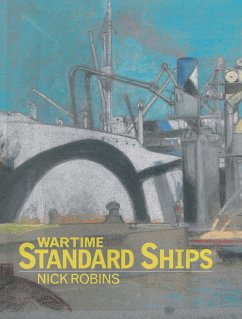In both World Wars there arose a pressing need for merchant tonnage both to supplement existing ships but, more importantly, to replace ships that had been sunk by enemy action, and the key to the Allied strategy in both wars was a massive programme of merchant shipbuilding. This need gave rise to a series of standard designs with increasing emphasis on prefabrication and a progression towards welded hulls.This new book tells the remarkable story of the design and construction of the many types that not only contributed to their countrys war efforts, but were also responsible for a cultural change in world shipbuilding that would lay the foundations for the post-war industry. The story begins in the First World War with the National type cargo ships which were the first examples of prefabricated construction. The best known of all types of wartime standard ships, of course, were the Liberty ships and their successor, the better equipped Victory ships, both built in the United States. Some 2,700 Liberty ships were built and this incredible achievement undoubtedly saved the Allies from losing the War. In Canada, the Ocean and Park ships made a further major contribution. Germany and Japan also introduced standard merchant shipbuilding programmes during the Second World War and these are covered in detail. The many different types and designs are all reviewed and their roles explained, while the design criteria, innovative building techniques and the human element of their successful operation is covered.Some of the story has been told piecemeal in a range of diverse books and articles, a few with extensive fleet lists. However, the complete history of the twentieth century wartime-built standard merchant ship has not previously been written, so this new volume recording that history within its appropriate technical, political and military background will be hugely welcomed.
Dieser Download kann aus rechtlichen Gründen nur mit Rechnungsadresse in A, B, BG, CY, CZ, D, DK, EW, E, FIN, F, GR, HR, H, IRL, I, LT, L, LR, M, NL, PL, P, R, S, SLO, SK ausgeliefert werden.









